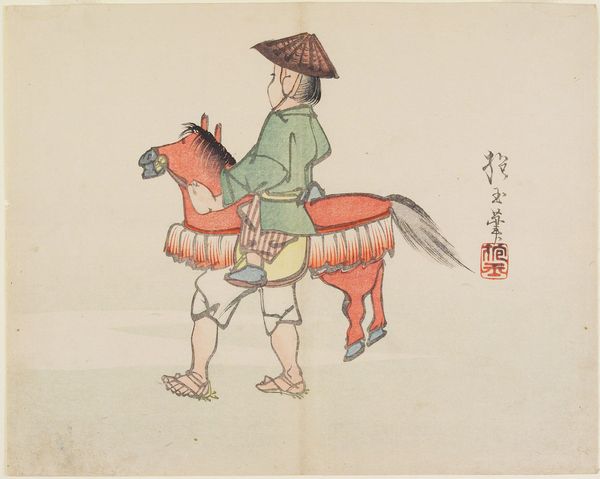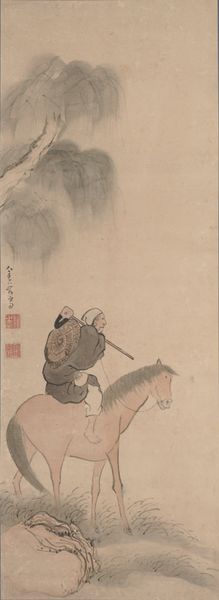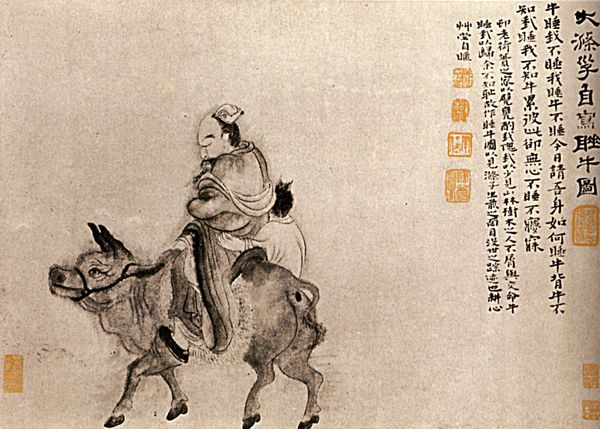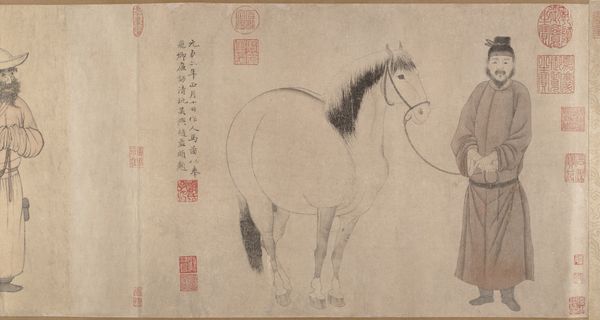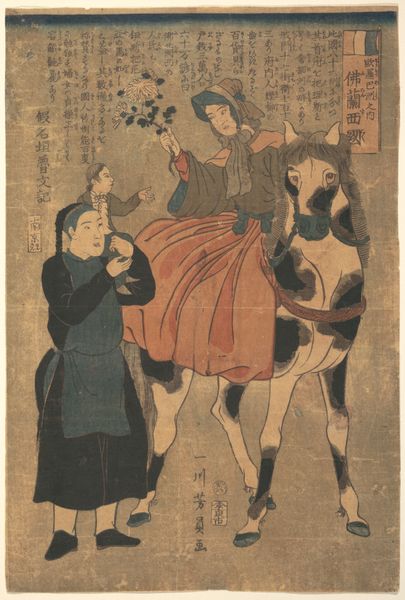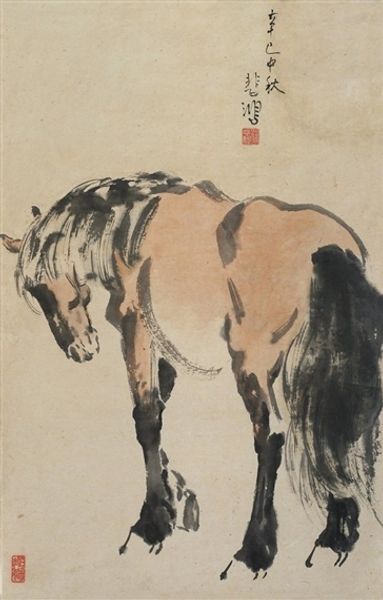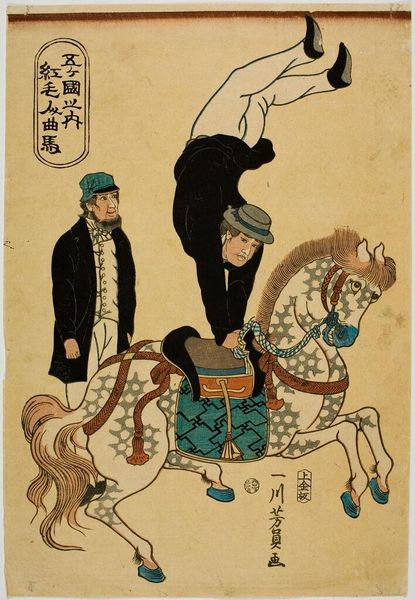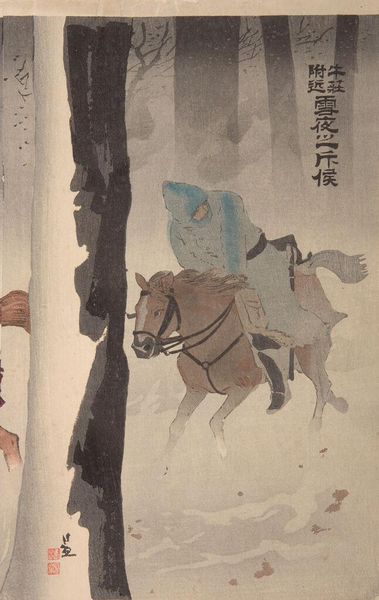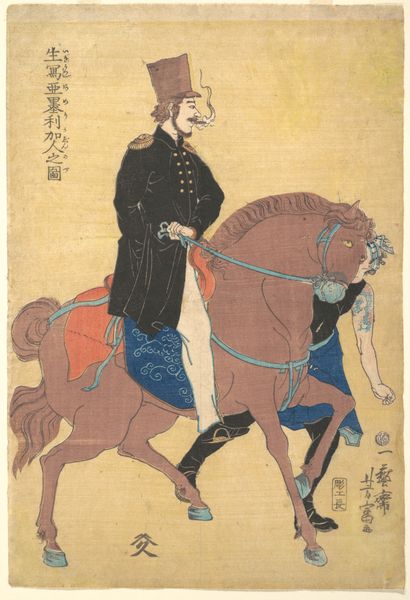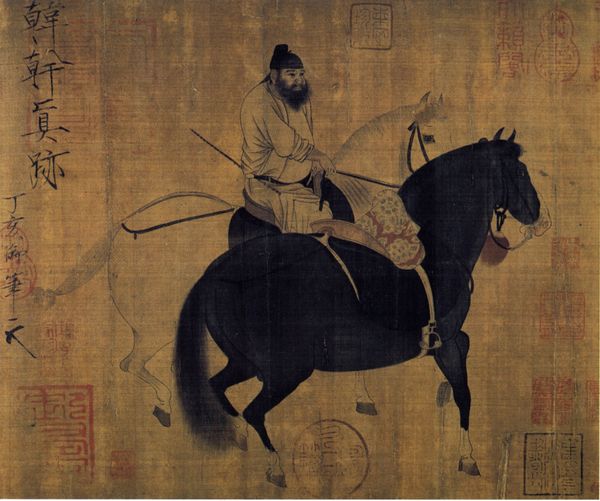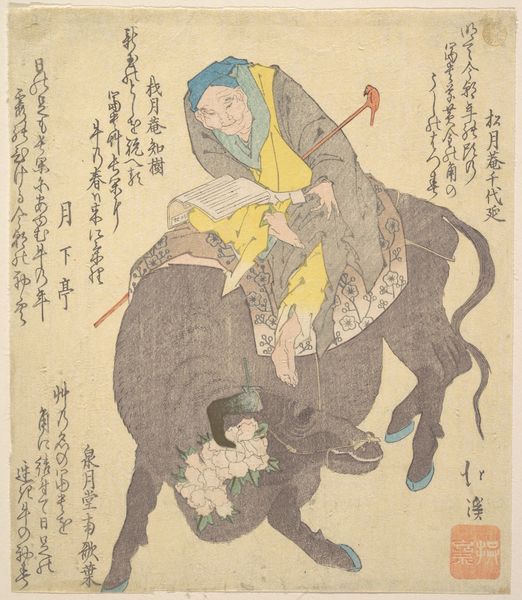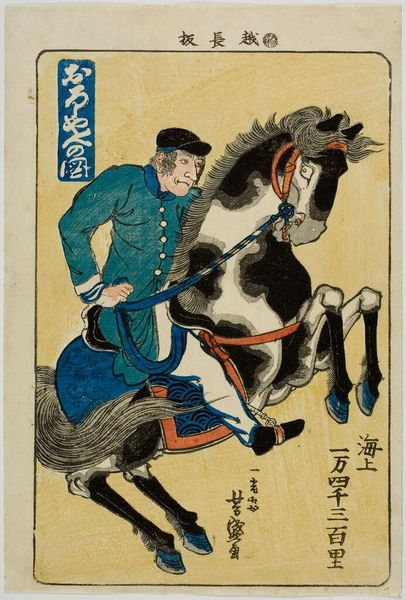
drawing, paper, ink
#
portrait
#
drawing
#
animal
#
asian-art
#
paper
#
ink
#
folk-art
#
sketchbook drawing
#
watercolour illustration
#
genre-painting
Copyright: Public domain China
Curator: Here we have Xu Beihong's "Riding on a Donkey," a drawing rendered in ink and color on paper from 1930. Editor: Immediately, the simplicity strikes me. It’s like a quick sketch, capturing movement and character with the barest of means. There’s a humor in the slightly awkward posture of the rider, a casual observation of everyday life, wouldn’t you agree? Curator: Indeed. The composition is deceptively complex. Note the strategic use of blank space which highlights the solidity of the figures. The artist employs traditional brushwork techniques with varying ink densities. The calligraphy adds another layer. Editor: The donkey's legs—those sharply angled lines! They suggest a fragile energy, like a creature pieced together from geometric whimsy. Is it me or there's an intrinsic kindness in those eyes? I can almost hear the soft plodding of its hooves. Curator: Perhaps, or it's a projection of your subjective disposition. But if we consider Beihong's formal training and advocacy for realism within Chinese art, this work shows both his grounding in traditional methods and an inclination to depict the everyday, elevating the mundane into something of note. Editor: Realism, yes, but also imbued with such charm. Look at the man's little hat, his slightly comical moustache. There is real warmth to this drawing, which manages to combine a critical observation and the artist’s pure affection for his subject matter. It brings a smile to my face every time I see it. Curator: A suitable, albeit emotional response. I’m particularly interested in how this work operates within a broader understanding of twentieth-century Chinese art reform. It negotiates Western and Eastern aesthetics in a compelling way. Editor: Well, it makes me want to jump on a donkey and find out where it leads, cultural reform or not! Its spontaneity and character truly endure. Curator: Precisely. And its clever utilization of negative space and masterful application of ink contribute greatly to its continued importance within Chinese painting history.
Comments
No comments
Be the first to comment and join the conversation on the ultimate creative platform.
